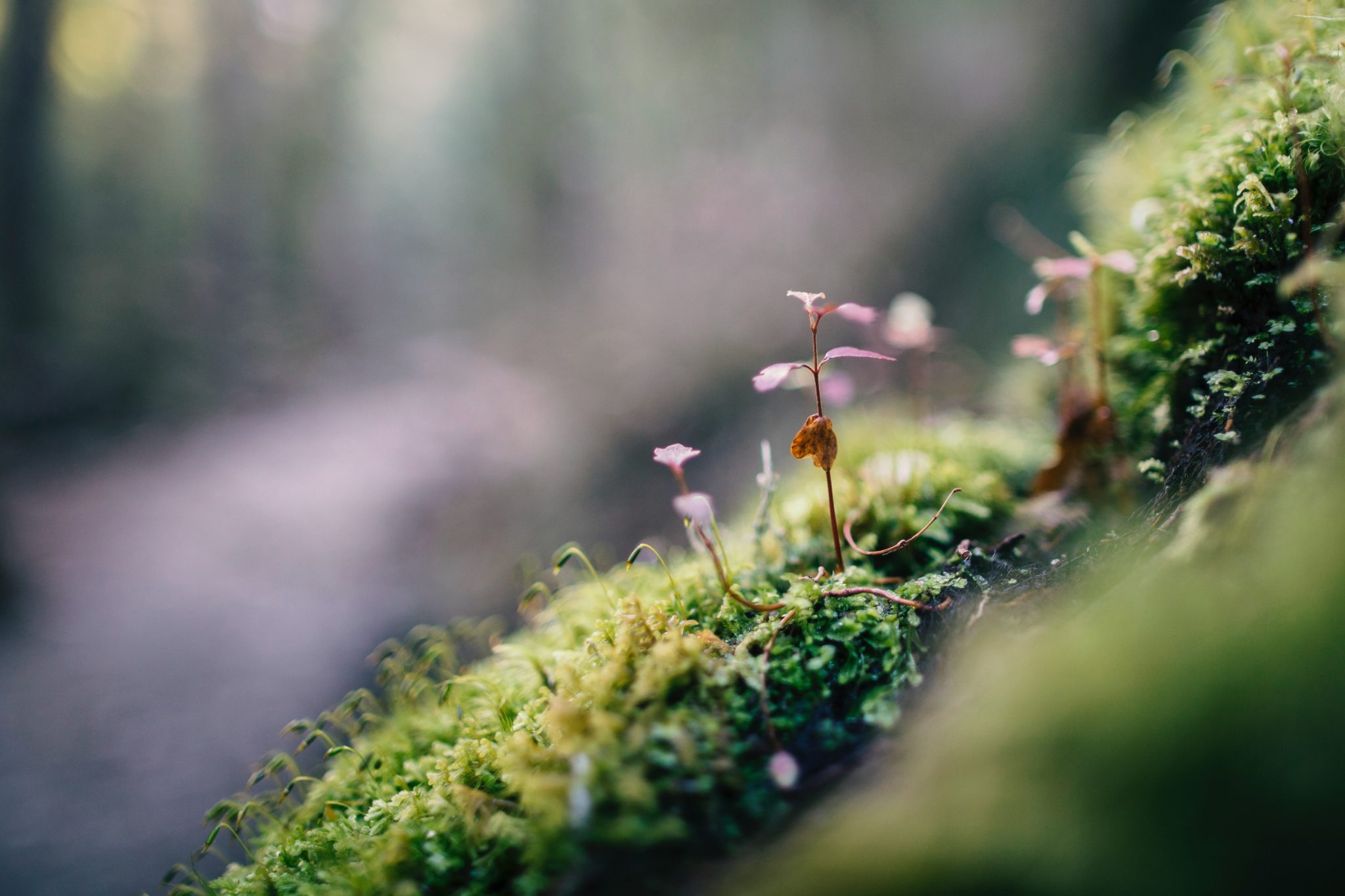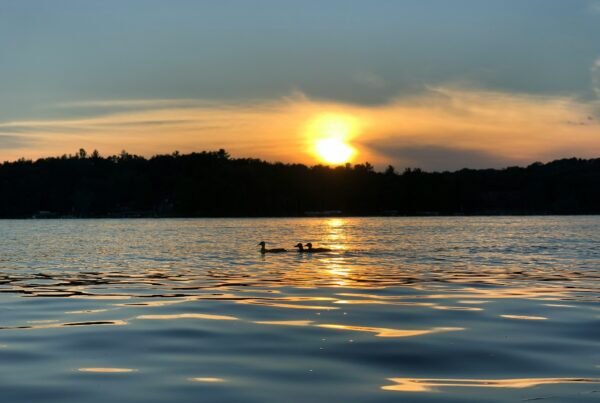This is the fourth article in a series on creation care through the church year.
I n this series, we’ve explored creation care through the church calendar—from Lent through Pentecost, through Ordinary Time.
Now we come to Advent.
Though it falls last in this series, Advent is the beginning of the church year. And like each of the liturgical seasons that we’ve explored, Advent illuminates something elemental about where we live all year. Advent is a season of expectant waiting and preparation. In Advent, we look back to the foundation of our faith—Christ’s incarnation—and look forward to his second coming, all the while waiting actively, hopefully.
Advent places us in the tension between God’s “already” and the “not yet” of a world far from how it ought to be.
The story we remember at Advent is a story of God’s promise and presence breaking into the world in a new way—to mixed reactions. The story is about the Christ child; it is also about the ones whose lives he interrupts.
The birth of Jesus is central to the Advent drama, but Mary is a main protagonist. Recalling God’s mighty deeds for Israel (Luke 1:46-55), Mary says yes to this new thing God is doing, even if few others can perceive it. In Mary, we see radical openness to God’s preferred future and readiness to bear that future into the world. With Mary, her cousin Elizabeth also believes and receives God’s promises. The two women are the first to receive God’s breaking into history in and through Jesus. Joseph, shepherds, and foreigners (the magi) follow.
But Herod says no. His greed for power and violence forces the child and his parents to flee as refugees. He rejects the newness brought by Jesus, just like another earthly ruler—Pontius Pilate—will later. In fact, the theologian Rowan Williams sees Mary and Pontius Pilate as the two people besides Jesus named in the Apostles’ Creed as contrasting archetypes: “the one who says ‘yes’ to him; and the one who says ‘no’ to him.”
This, too, is part of the story we remember at Advent: not only gladness, receptivity, and song at Christ’s nativity, but also resistance, violence, and evil.
From where many of us sit, it’s easy to forget that God’s nonviolent interruption into history was met by violent resistance. It can be easy to forget that saying yes to the newness brought forth in Jesus entails risk.
What does the Advent story have to do with creation care?
Advent ought to, I believe, open us up to newness in our midst and inspire us to offer hope and healing to a hurting world—badly needed in this ecological era. But just as Jesus’s birth is disruptive to the old order and is met with resistance, witnessing to God’s desire for a renewed creation—made possible in the incarnation—is not free of difficulty.
Sadly, however, many self-proclaimed Christians are among the people least responsive to creation’s degradation and least open to transformational change in response.
A recent Pew survey on religious Americans’ view on the environment found that, among religious groups, evangelical Protestants were least likely to accept the scientific consensus that global warming is caused by human activities (only 32 percent). Moreover, religious service attendance in general was not found to lead to discussion of our environmental plight: 78 percent of religious Americans seldom or never talk about climate change with members of their congregation. Finally, Christians across stripes, while somewhat inclined to participate in environmental activities, were much more likely to keep their action personal rather than engage civically on the issue (only 21 percent of Christians).
Dr. Debra Rienstra summarizes the findings like this (emphasis hers):
All of this adds up, in my view, to a serious failure of discipleship in Christian contexts (I will not speak about other faiths). We Christians are happy to talk about stewardship, but it remains a toothless concept, allowing us to remain mostly concerned for personal freedom and economic prosperity. We are less likely than non-religious folk to take climate change seriously or engage in civic actions. We are shaped more by economic and political influences than by religious claims.
It would seem that as far as creation care goes, the views and practices of certain strands of U.S. Christianity suggest we are more concerned about business as usual than ready for transformational change. In the U.S., it would seem, being a professing Christian seems to lead to less creation care, not more.
At this point, most of us know creation is imperiled. We can grasp that creation care is not only about plants and animals and land—it’s also about our neighbors’ and our own wellbeing. Without a stable and healthy environment, it is impossible for us and our neighbors to flourish.
And yet, those of us who claim Christian faith are not, for the most part, witnessing to a better way. How can those of us who are Christians move from being some of the most resistant to taking ecological destruction seriously, to being among the most ardent protectors of creation, including one another and the most vulnerable among us?
I believe part of the answer lies in returning to the gospel we celebrate during Advent.
In Advent, we remember when God does a new thing, through Christ and out of love for the world—and God’s people respond. We recall God throughout Scripture taking political and economic sides; not in a modern partisan sense, but in terms of loving and saving rather than condemning the world and showing special priority to the poor and those considered lowly.
As a recent report from the National Association of Evangelicals states: “While the good news is indeed for the whole world, Jesus expressed from the beginning his particular concern for the least and last among us.” I think this means that, beyond gardening or recycling, creation care requires standing with the least of these against the practices and institutions that are degrading the conditions for life on earth today (like the fossil fuel industry, whose deadly product and absurd subsidies and profits harm the poor first and worst). Creation care means doing justice.
Moreover, Advent is a season for longing and visioning. Advent brings us into a space of longing for a world set right and gives us a vision for a restored creation where God’s shalom reigns. We encounter a vision for the future, based on what God has promised and done in the past, in the prophet Isaiah, who foretells the peace that will come with the Messiah’s reign. We hear it in Mary’s song of praise, as she beckons toward a world of social reversal and God mightily raising up the prospects of the lowly.
A hopeful vision for the world to come
Is this the kind of world we also long for and look for? Or do we long and look for things to remain pretty much the same as they are now (the status quo bias)?
Those of us who’ve heard the Advent story have been given a vision that begs to be shared with the world right now, where there is resistance to change and also deep disquiet and understandable distress. We have been given a vision that is an alternative to the violence, nihilism, apathy, and despair we see around us.
By longing for a renewed creation as God intends, by actively longing for spiritual and ecological renewal, restoration, and regeneration, we can offer a powerful witness to a world hungry for vision that is hopeful and longing that is active. In this we have examples:
Like the late archbishop Desmond Tutu, who resisted apartheid and the way it desecrated the image of God in people and later in his life for similar reasons, directly opposed the fossil fuel industry.
Like Christian Climate Action in the UK, disrupting apathy and standing aside neighbors of all faiths in resisting the harm being done to our common home.
Like the young women around the world speaking out for a better environmental future.
Like many others around the world who everyday are bearing witness to a future in which creation is restored and people’s well-being is protected.
In Advent, we are invited to fearlessly face the world and notice the gulf between creation as God intends and creation as it is now. And not only notice, but also to act on what we see: to offer a counter witness to the death and destruction that threatens God’s creation; to resist the injustices of the current age while witnessing to a better future based on what God has already done and promised to do, which is to bring deliverance where there is oppression and to make make peace where there is violence—through Jesus. When we, as followers of Jesus, live with a vision and longing for a restored creation and resist what desecrates that creation, we bear witness.
As we begin the liturgical year, it’s a good time to reflect on how we might bear witness:
- How can I prepare the way for God’s shalom in our world?
- What holds me back from taking a more active role?
- How can I engage with others civically, beyond my personal actions?
- What kind of spiritual work—inner and outer—does my faith community need to be ready and receptive for hopeful change to come about?
- What would it look like for us to actively long for God’s renewed creation within our current degraded environment?
- How can we respond to God’s love for the least of these, who are most harmed by the destruction of creation?
In reflecting on these questions, we return to where we began this series: sight. We are called to not only see our place within creation, but also foresee a renewed creation and to speak and act in response to this vision, witnessing to God’s love, provision, and deliverance in the face of present injustices.
This is where we begin the liturgical year. And we start here again, every day and every year.
Resources for creation care during Advent
- Creation Justice Ministries: offers a resource hub for further education, study, understanding, and tools
- Debra Rienstra, Refugia Faith: Seeking Hidden Shelters, Ordinary Wonders, and the Healing of the Earth: Calvin University professor Debra Rienstra offers a Christian spirituality and practice for an altered creation. Rienstra’s newsletter is an excellent resource for people of faith who care about the climate crisis and want to go deeper.
- “Loving the Least of These: Addressing a Changing Environment”: a report from the National Association of Evangelicals
- Pope Francis, ‘Laudato Si’: On Care for Our Common Home: this letter, which can be purchased in book form and has an accompanying documentary, lays out a spiritual ecology for relating love of neighbor to environmental concerns
- Faithward’s Creation Care Toolkit: articles and resources for the church’s witness

Nate Rauh-Bieri
Nate Rauh-Bieri (M.Div.) attended the UN Climate Conference (COP26) representing the Climate Witness Project as part of the Christian Climate Observers Program. He lives and occasionally writes in Grand Rapids, Michigan.



